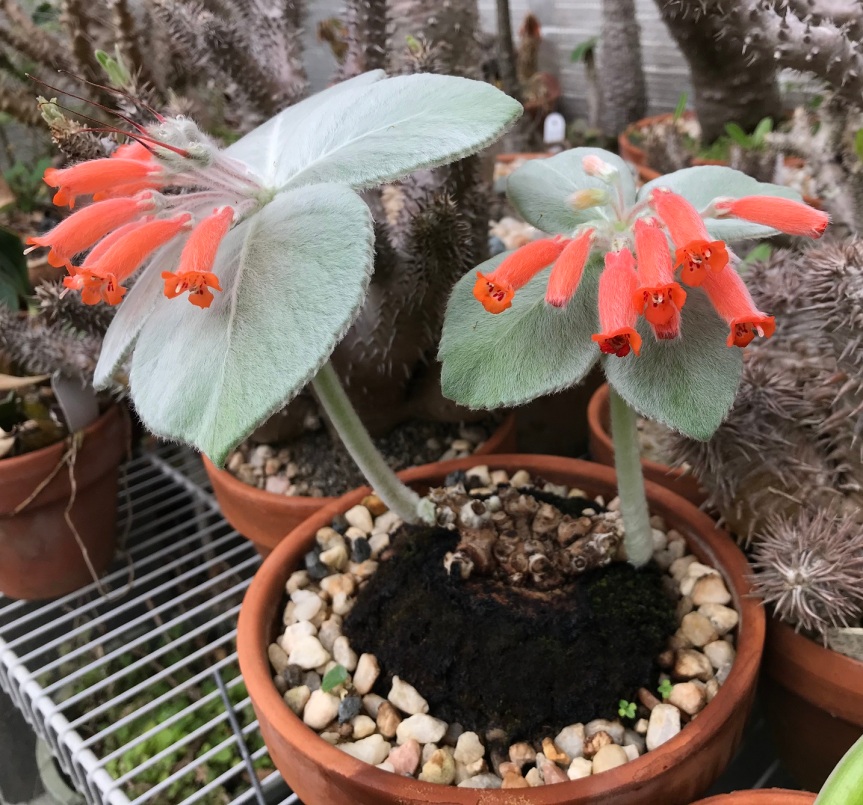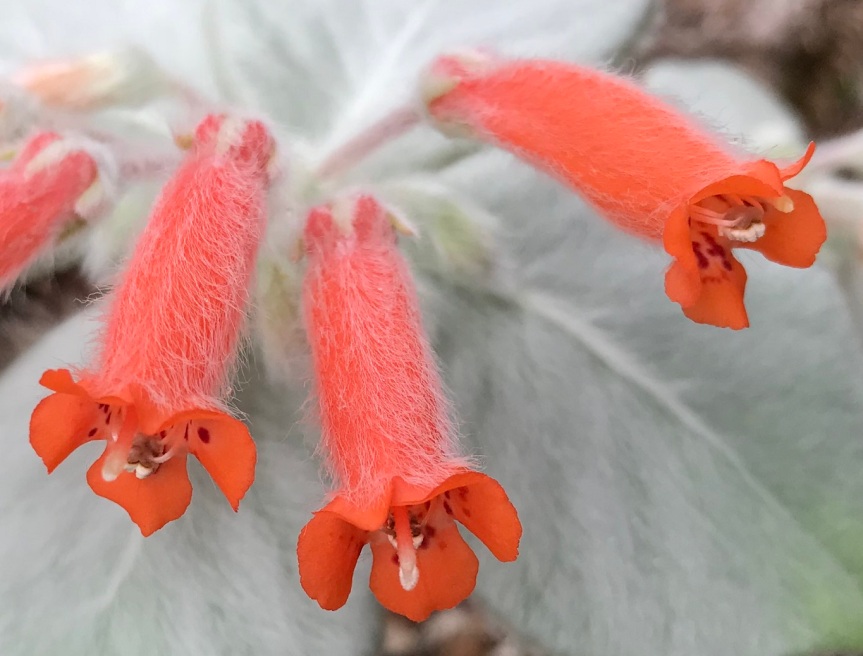
One of the common names of this species makes it sound like a demon in a medieval grimoire or a villain in a fantasy novel. The alternative, Brazilian edelweiss, is more than a little twee. Take your pick, or just refer to it as Sinningia leucotricha.
S. leucotricha grows as a lithophyte in Paraná State, often on cliffs and steep hillsides which presumably accounts for its picturesque English name (itself apparently a translation of the Portuguese rainha do abismo). Each deciduous stem, topped with four softly felted leaves, emerges from a massive tuber that enables the plant to survive long periods without water. The bright orange flowers are produced in the spring, as the new stems mature, and bear all the hallmarks of hummingbird pollination.
I have been growing my S. leucotricha since 2001, and it is currently in a 8-inch (20 cm) diameter pot. The tuber hasn’t grown noticeably in the last five or six years, at least not above ground, and I suspect that it is long overdue for repotting. It is potted in gritty, fast draining soil and is grown in the brightest part of my greenhouse, together with the Pachypodiums and other succulents. Although some tuberous Sinningias are hardy in my garden, S. leuchotricha‘s long dry dormancy and habit of growing exposed at the surface would certainly make it a poor candidate for cultivating outside. For best appearance of the furry foliage, S. leucotricha should be protected from overhead watering, grown in the brightest light possible, and not overfertilized.
S. leucotricha has a definite growing schedule that must be respected. My plant starts to go dormant in early autumn, at which point I stop watering entirely. Once the stems are completely dry, I snap them off. The plant stays completely dry for several months, but I give it a little water in late January or February when I see fuzzy little bumps forming at the top of the tuber. Once the stems are in full growth, I give it a thorough watering about once a week, allowing the pot to dry between waterings. It blooms now, March into April, and after the flowers dry it doesn’t grow again until the next year. The leaves stay green–well, white–all summer, and I continue watering, but the plant doesn’t visibly do anything.


My plant does exactly the same here in the UK. I think my plant is about the same age as yours and I treat it just as you do. It is an easy-going plant that is very forgiving. I get two or three stems a year – two this year though there are more furry buds at the base and I always hope I will get more. I am very fond of it.
LikeLiked by 1 person
Yes, that name is a bit odd, and the alternative is . . . just like you say (even though I don’t know what that word means). It is compelling though. Lithophytes are so weird. I grew epiphytic Yucca lacandonica years ago. Yes, epiphytic and yucca; two things that do not go together.
LikeLiked by 1 person
I have never heard of an epiphytic yucca before. Never even imagined one…
LikeLiked by 1 person
It is not easy to imagine. It is as weird as one might try to imagine.
LikeLiked by 1 person
I saw these at a flower show once and was intrigued, I would have been even more so had I known the common name! What a cool thing, so delicate and soft coming out of a crusty old tuber. Some plants are just plain amazing.
LikeLike